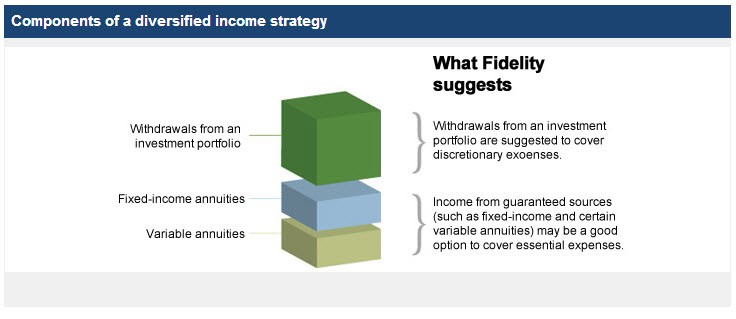FidelityVoice Five Strategies For Coping With Volatile Markets
Post on: 12 Июнь, 2015 No Comment

Market volatility can happen at any time. Lately, it seems to have been driven by a slowdown in Europe, the outbreak of Ebola, and instability in the Middle East. In recent years we have seen the market buffeted by standoffs in Washington, technical trading glitches, severe weather in Asia, debt crises in developed markets, military conflicts, and more. The point: Bouts of volatility happen often, and when they do, it can be unsettling for many investors.
“Nothing causes investors to question their strategy and worry about their money like a dramatic sell off,” says John Sweeney, Fidelity executive vice president of retirement income and investment strategies. “A natural reaction to that fear might be to reduce or eliminate any exposure to stocks, thinking it will stem further losses and calm your fears, but that may not make sense in the long run. But it should be a reminder to review your investments regularly and make sure you have an investment strategy with exposure to different areas of the market.”
Here are five strategies to help you cope with volatility.
1. Have a strategy.
Your time horizon, goals, and tolerance for risk are key factors in helping to ensure you have an investment strategy that works for you. Your time horizon is the amount of time you can keep your money invested. Your tolerance for risk should take into account your broader financial situation such as your savings, income, and debt—and how you feel about it all. Looking at the whole picture can help you determine if your strategy should be aggressive, conservative, or somewhere in between.
2. Be comfortable with your investments.
If you are nervous when the market goes down, you may not be in the right investments. Even if your time horizon is long enough to warrant an aggressive portfolio, you have to be comfortable with the short-term ups and downs you’ll encounter. If watching your balances fluctuate is too nerve-racking for you, think about re-evaluating your investment mix to find one that feels right.
But be wary of being too conservative especially if you have a long time horizon because more conservative strategies may not provide the growth potential you need to achieve your goals. Set realistic expectations, too. That way it may be easier to stick with your long-term investment strategy.
Choose the asset mix you are comfortable with.
Data Source: Ibbotson Associates, 2014 (1926–2013). Past performance is no guarantee of future results. Returns include the reinvestment of dividends and other earnings. This chart is for illustrative purposes only. It is not possible to invest directly in an index. For information on the indexes used to construct this table, see footnote 1.
One of the most important things you can do to help manage the risk of volatile markets is to diversify. While it won’t guarantee you won’t have losses, it can help limit them. See the table below.
Diversification has helped to smooth out market volatility.
Source: Strategic Advisers, Inc. Hypothetical value of assets held in untaxed accounts in an all cash portfolio; a diversified growth portfolio of 49% U.S. stocks, 21% international stocks, 25% bonds, and 5% short-term investments; and all stock-portfolio of 70% U.S. stocks and 30% international stocks. This chart’s hypothetical illustration uses historical monthly performance from January 2008 through February 2014 from Morningstar/Ibbotson Associates; stocks are represented by the S&P 500 and MSCI EAFE Indexes, bonds are represented by the Barclays U.S. Intermediate Government Treasury Bond Index, and short-term investments are represented by U.S. 30-day T-bills. Chart is for illustrative purposes only and is not indicative of any investment. Past performance is no guarantee of future results.
So how do you diversify? First, consider spreading your investments among at least the three core asset classes—stocks, bonds, and short-term investments. You may also want to include other assets classes, like real estate securities, which are not always closely correlated with the core asset classes. Then, to help manage risk even more, diversify the investments within each asset class.
4. Do not try to time the market.
Attempting to move in and out of the market can be costly, particularly because a significant portion of the market’s gains over time have tended to come in concentrated periods. Many of the best periods to invest in stocks have been those environments that were among the most unnerving. Investors face long odds in trying to time the ups and downs of the market, and Fidelity data shows they tend to increase their allocations to stocks ahead of downturns and decrease their exposure just prior to market rallies.
5. Consider a hands-off approach.
To help ease the pressure of managing investments in a volatile market, you may want to consider an all-in-one fund or professionally managed account for your longer-term goals such as retirement. These funds provide diversification with exposure to various asset classes and investment styles in a single fund, with the added benefit of professional asset allocation.
You may also want to consider a regular investment process, where you invest a set amount with each paycheck or each month. Making regular purchases regardless of market conditions can help you to dollar-cost-average.
The bottom line
Rather than focusing on the turbulence, wondering if you need to do something now, or what the market will do tomorrow, it makes more sense to focus on developing and maintaining a sound investing plan. A good plan will help you ride out the peaks and valleys of the market, and may help you achieve your financial goals.
- See whether your investment mix is in line with your long-term goals, use our Portfolio Review tool. 2
- Research Fidelity’s solutions including asset allocation funds and managed accounts .

Before investing in any mutual fund, please carefully consider the investment objectives, risks, charges, and expenses. For this and other information, call or write Fidelity for a free prospectus or, if available, a summary prospectus. Read it carefully before you invest.
Investment decisions should be based on an individual’s own goals, time horizon, and tolerance for risk.
Past performance is not a guarantee of future results.
Stock markets, especially foreign markets, are volatile and can decline significantly in response to adverse issuer, political, regulatory, market, or economic developments.
In general, the bond market is volatile, and fixed-income securities carry interest rate risk. (As interest rates rise, bond prices usually fall, and vice versa. This effect is usually more pronounced for longer-term securities.) Fixed-income securities also carry inflation risk and credit and default risks for both issuers and counterparties. Unlike individual bonds, most bond funds do not have a maturity date, so holding them until maturity to avoid losses caused by price volatility is not possible. Lower-quality debt securities involve greater risk of default or price changes due to potential changes in the credit quality of the issuer.
The commodities industry can be significantly affected by commodity prices, world events, import controls, worldwide competition, government regulations, and economic conditions.
Changes in real estate values or economic conditions can have a significant positive or negative effect on issuers in the real estate industry, which may affect your investment.
The S&P 500 Index is a market capitalization–weighted index of 500 common stocks chosen for market size, liquidity, and industry group representation to represent U.S. equity performance.
The Dow Jones Wilshire 5000 is a market capitalization-weighted index of approximately 7,000 stocks.
The Barclays Capital Global Aggregate Bond Index is an unmanaged market value-weighted index representing securities that are SEC-registered, taxable, and dollar denominated.
MSCI EAFE (Europe, Australasia, Far East) Index is a market capitalization-weighted index that is designed to measure the investable equity market performance for global investors in developed markets, excluding the U.S. & Canada.
1. Historical returns for the various asset classes are based on performance numbers provided by Ibbotson Associates in the Stocks, Bonds, and Inflation (SBBI) 2001 Yearbook (annual update work by Roger G. Ibbotson and Rex A. Sinquefield). Domestic stocks are represented by the S&P 500 Index, bonds are represented by U.S. intermediate-term government bonds, and short-term assets are based on the 30-day U.S. Treasury bill. Foreign equities are represented by the Morgan Stanley Capital International Europe, Australasia, Far East Index for the period from 1970 to the last calendar year. Foreign equities prior to 1970 are represented by the S&P 500 Index.
2. Portfolio Review is an educational tool that is not individualized and is not intended to serve as the primary or sole basis for your investment or tax-planning decisions.
Fidelity Brokerage Services LLC, Member NYSE,SIPC. 900 Salem Street, Smithfield, RI 02917














